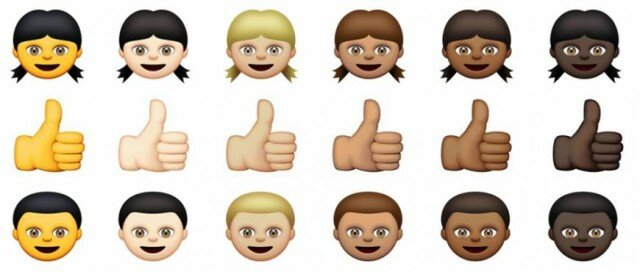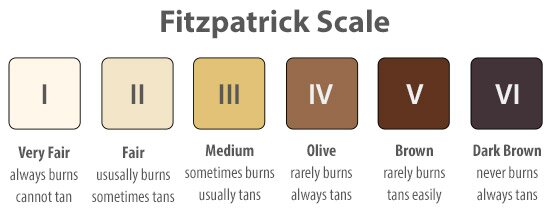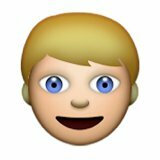News broke on Monday of 300 new emojis being introduced in Apple’s latest iOS beta and the Internet went bezerk. We’ll have the Apple Watch emoji (which will replace the existing watch emoji), families with same-sex parents, and 32 more country flags.
What’s been causing a storm, however, is the introduction of what the Internet is now calling “diverse emojis”: emojis that represent people will be available in six new skin tones, from dark brown to jaundice yellow.
Apple’s intent is a good one: they’re listening to people asking for diversity in emojis, which are increasingly being used in day to day speak, from social media to personal conversations.
Despite that, it doesn’t look like these new “diverse emojis” were received that positively. In facrt, 1/3 of all the subjective mentions (people giving their opinion on the matter) were negative.
The main reason? Misrepresentation or no representation at all:
“Asians aren’t that yellow” (48% of all negative mentions): almost half of all negative mentions were about the really yellow emojis:
I appreciate apple for diversifying emojis but using Simpsons yellow to represent Asians is lazy and offensive :/
— Frog Kid ()
apparently, the next ios update includes racially diverse emojis. great. except the "asian" emojis r literally as yellow as lemons. accurate
— D S L ()
Is that yellow supposed to represent Asians? Not the Asians I know (I personally have never seen Asians that yellow). The only people who come close to being that yellow are people with jaundice, Lego and the Simpsons.
“No ginger people?” (14% of all negative mentions): sure, we get more skin tones and we now even get a black Santa, yet there are no ginger people in sight. No red hair, no “ginger features”, nothing.
Apple may have made racially diverse emojis but there is still no gingers
— pippa ()
All these "racially diverse" emojis yet I don't see ONE with red hair?????? Explain that Apple
— MK ()
Other emojis are missing too: beards, curly hair, afro, spectacles, hijabs, Jewish people etc. Only a handful of mentions (1%) are asking for these to be represented by an emoji, and they’re negative in sentiment:
easy critique I suppose, but apple's "diverse" emoji? heavily opposing-gendered? no red hair? no curly hair? unfinished job, like osx10.10
— Eli Harrison ()
No gingers, no beards, no glasses… Apple's new diverse emojis are a fail
— Simone McCallum ()
Whose fault is it anyway?
Who decides what emojis look like? Not Apple, but the Unicode Consortium , “a non-profit corporation devoted to developing, maintaining” and standardising Unicode characters, including emojis. This Consortium decides what emojis to create, and what they look like (shape, colour etc.). These standards are necessary for emojis to be displayed properly across platforms, so you won’t have any issues sending and viewing emojis from Apple’s iOS to Android or any other platform (desktop included).
Apple revealed last year that they were working closely with the Consortium to release more diverse emojis. In the interest of diversity (and I guess to comply with standards), this Consortium used the Fitzpatrick scale, a classification for human skin color.
Although Apple is just following the Unicode Consortium, people still think that it’s Apple that creates these emojis and that they’re to blame. (Only 0.8% of all online mentions of these emojis actually refer to the Unicode Consortium, while 98% of all mentions refer to Apple.)
So, what do we learn from all this?
Lesson #1 of social media: you can’t please everybody, and that’s fine. But calling these emojis “diverse”?
Oh, and lastly… Apple slapping multiple colours on emojis doesn’t make them diverse. It just makes them multicoloured. But that’s just me…
— Ben Donkor ()
Sure, Apple could’ve done a lot more damage by emphasising stereotypes (slant eyes, bigger lips and so forth). But changing the colour layer of these emojis doesn’t make them diverse, it just makes them multicoloured.
Emojis were meant to be race-neutral, a way to convey emotion, not race. We only have a problem with ‘diversity’ when we’re trying to see a representation of ourselves in these emojis. If that’s how we view emojis, then we’re bound to be disappointed.
Take the “blond emoji” you have on iOS for instance.
The Unicode Consortium decides that the “person with blond hair and blue eyes” emoji still has blond hair and blue eyes regardless of skin tone. With Apple’s new iOS beta we’ll now have the option to have a dark-skinned blond emoji with blue eyes. A dark-skinned blond emoji with blue eyes. The only black guy with blonde hair and blue eyes I know is Simon Phoenix, and he’s a fictional character.
So no, we’re not getting racial diversity, just a way to choose skin tone on faces with Caucasian features.
These new emojis aren’t racist, in the same way that they’re not racially diverse. They’re just multicoloured emojis, and they’re not supposed to represent all of us, and guess what: that is totally fine.
At least in their effort and good intent both Apple and the Unicode Consortium have tried. Whether it was a good try or not it’s totally debatable, but you can’t fault them for trying.



